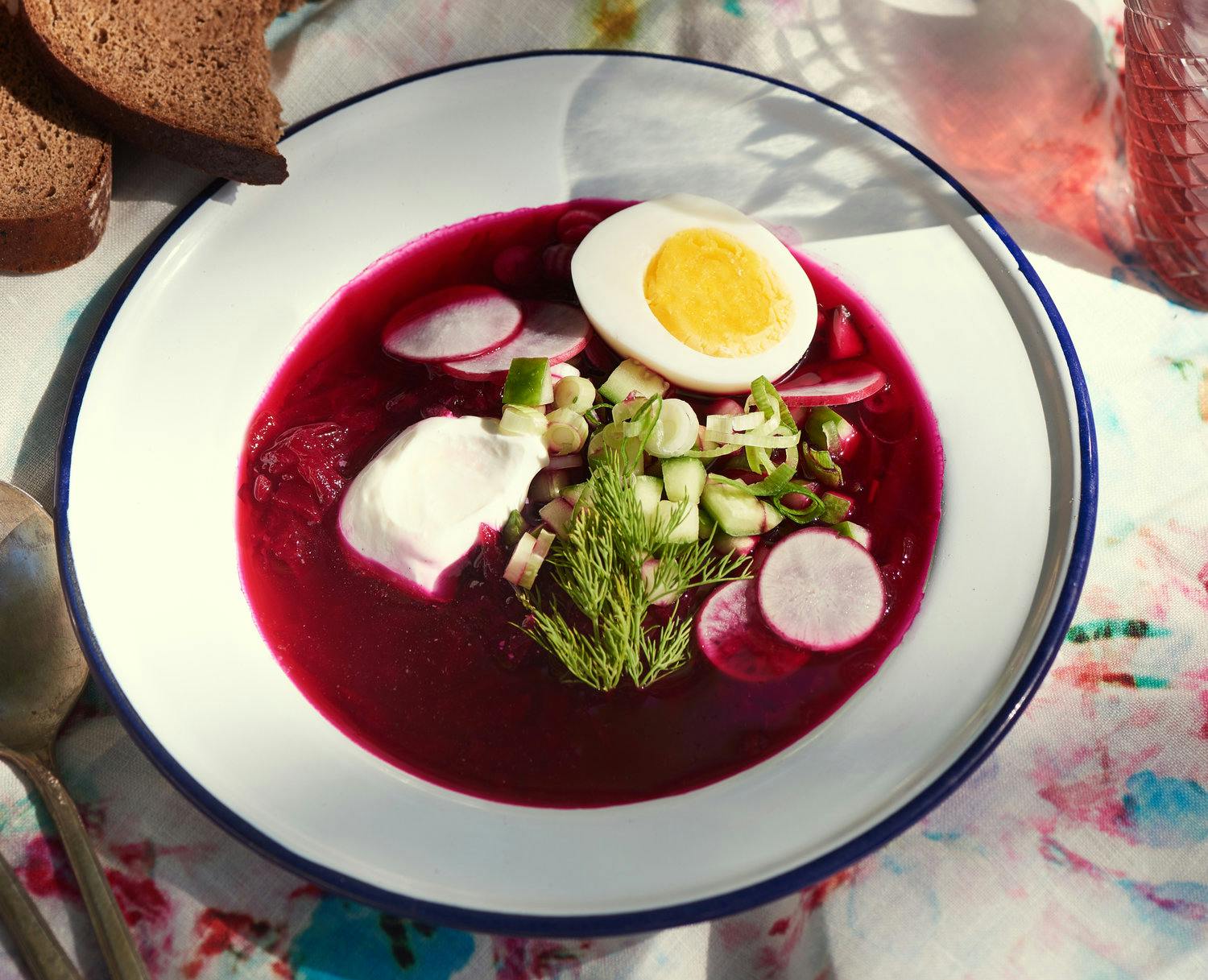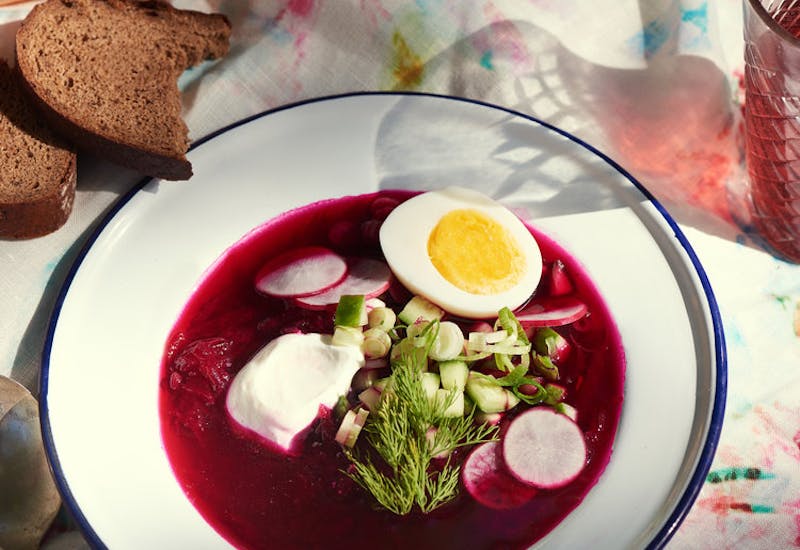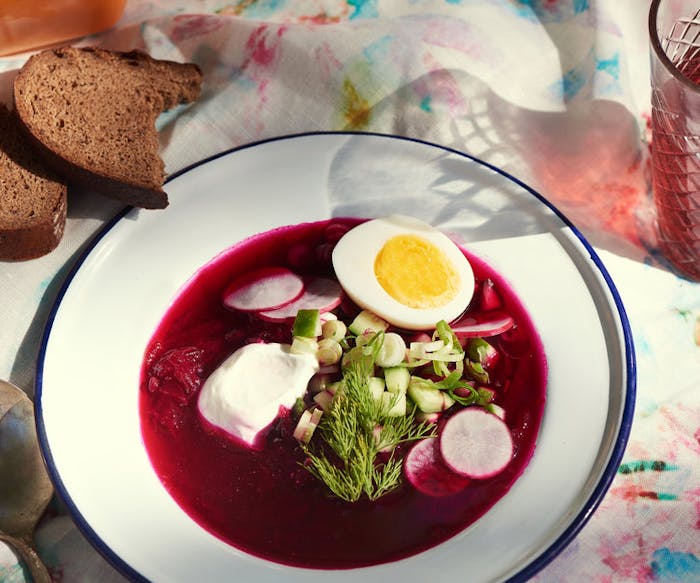This summer, our cook-in-residence Sasha Shor, is sharing a collection of picnic-ready recipes her family brought with them to Nashville when they left the USSR in 1978. To hear more of Sasha’s story and try her family recipes for lamb kebabs, chopped salads, and pickled watermelon, check out the first installment of the series: "The Russian Picnic Tradition a Family Smuggled Out of the USSR." Last week, Sasha shared her recipes for cherry kompot and cake — the perfect ways to use up summer’s bounty.
_
Unlike many Soviet expats, Sasha’s family settled in an area with no Russian community to speak of — and no Russian cafes or markets to provide a taste of home. In place of community, there was family. In the 1930s, cousins of her grandfather immigrated through Ellis Island and settled in Nashville when one of their daughters, Pauline, attended medical school and ultimately set up a local medical practice in Nashville.
They may have lost touch over the years, Sasha says, but “the minute it [became] a possibility to come to America, we reconnected with relatives to help us go through the process.” Not everyone was so lucky. But in Sasha’s family, their family in Nashville helped them secure a visa to leave the USSR and to acclimate to their new life in the U.S.
With only family to connect with, Sasha explains: “We kind of went inward, it became even more important,” to preserve Russian traditions and recipes. Cooking in the family changed little with the move. Her parents would walk along the outside perimeter of the grocery store and pick up bags of onions, potatoes, and carrots. “They didn’t speak English that well,” she says, and the complicated instructions on the back of boxes of the 1980s that could be zapped in the microwave were puzzling.
One of traditions kept alive was soup at the start of every meal: “There was always a soup on the menu,” she says. Garnet-red borscht was in regular rotation, as was green borscht when nettle and sorrel were in season, and shchi or white borscht made with cabbage, potatoes, and carrots, and okroshka, a soup made with sour cream yogurt, cucumber and pickle brine.
During the summer, there was always a deep purple borscht called svekolnik served cold. Crunchy kirby cucumbers, scallions, and radishes make it extra refreshing. Her mother always stored a batch in the fridge in an enamel pot adorned with flowers. The pot kept the soup “ice cold,” Sasha says, “and had the secret double duty of also looking much more ‘Russian’ in the fridge next to some of the American groceries. [It] was always the one I wanted the most.”


